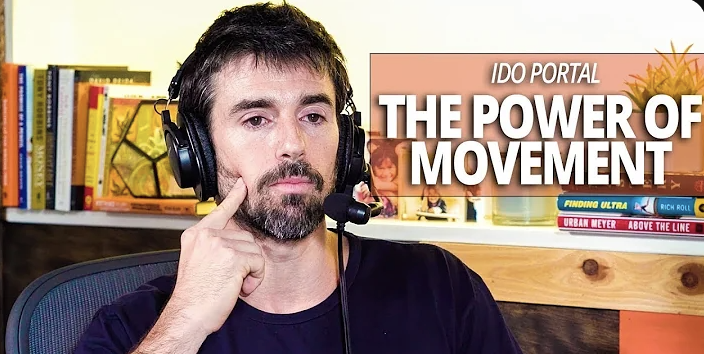The Most Natural Move
HANGING: Modern or Primal?
“Since most injuries, ailments, and discomforts happen around the tendons and ligaments, we spend a lot of time upfront strengthening those areas for two reasons. The first is the most obvious; the work serves as a pre-hab for the body. It's better to spend time fixing your body before something traumatic happens and you wind up in physical rehab or, worse, surgery. The second is strengthening the weak links throughout the body, preparing the body for more complex movements. The way you would bundle yourself up with layers of clothing, a scarf, and a coat before venturing out into the cold, we can bundle up the joints to venture out into movement.”
-Will
WATCH⤵️
Aging is certainly a state of mind, but it is also a state of your movement practice. Had my fitness routine stayed the same it was twenty years ago I would have lost mobility in search of strength and aesthetics. Because I listened to my body and pursued better movement solutions I can say that at forty-four years of age I can move better today than my younger self.
As a young trainer, I remember clients telling me, "Wait until you get older; you won't be as excited to do these exercises as you are now." At the time, I thought, "Of course, I will be, and you just may not be motivated enough." Things did change for me when I turned 35 years old. After getting out of bed, I began to feel aches and pains in my hips and feet. It would take a few hours for my body to "warm up" and the discomfort to disappear.
To start with, I tried all I could to aid me. I found a great massage therapist and physical therapist. I purchased a black & decker car buffer because, before the Theragun, the oscillating action of the car buffer was great for deep tissue work. I used bands, lacrosse balls, and foam rollers. All of it was so painful that it drove me to find better solutions.
Nowadays, I don't use any of that. Instead, I have used tools and exercises to develop my body where it is weak. The body constantly sends signals; if you learn to listen, you can catch things before it's too late. The pain in my hips and feet went away when I began exploring Locomotion and tripled the amount of mobility and flexibility in my training regimen. I continued working through my joints to future-proof my body. I am not saying that I am always pain-free. However, my relationship with pain is now more about a conversation with my body where I need to spend more time and attention.
Since most injuries, ailments, and discomforts happen around the tendons and ligaments, we spend a lot of time upfront strengthening those areas for two reasons. The first is the most obvious; the work serves as a pre-hab for the body. It's better to spend time fixing the body before something traumatic happens, and we wind up in physical rehab or worse, surgery. The second is strengthening the weak links throughout the body to prepare the body for more complex movement. The way you would bundle yourself up with layers of clothing, a scarf, and a coat before venturing out into the cold, we can bundle up the joints to venture out into movement.
One common area of discomfort for many people is the arms and shoulder area. People are dealing with the top five issues: shoulder, back, knee, wrist, and elbow. Three of the five can be improved by developing a hanging practice. Many anthropologists believe that we spent more time climbing than we have spent walking. The ability to climb, hang and swing is innate and is built into our DNA, and this is why we need to anchor dressers and cabinets to the walls because when children see an opportunity to scale something, they take it. My 4-year-old daughter is constantly hanging off of something. As much as I would like to take credit for this part of her movement exploration, I did not teach her this. She's been wrapping her little fingers around small ledges and bars for two years now, all on her own. Before modern society we had to survive in the wild and since we spent more time in nature, as a species, then we had in warm buildings; the desire to climb is still wired within us.
Hanging improves everything from grip strength to the glenohumeral scapular area to creating space between the vertebrae. Initially, it's uncomfortable because the skin must desensitize, but over time the tissues adapt, and you are left with solid handles, elbows, shoulders, and scapulas. Once you develop an excellent hanging base, you can swing from bar to bar or simply across a long bar and even rock climb.
READ ⤵️
Humans evolved in the cliffs, rocks, caves, steep riverbeds and canyons of east Africa, and took to the rocky terrain with ease. They left behind the earliest existing fossil evidence of rock climbing skills in the Rising Star Cave.
Watch: Ido Portal on Lewis Howes
In this clip, Ido Portal shares the benefits of developing a hanging practice. He shares some points about his Hanging Challenge, which he has been promoting for over ten years. The entire interview is also worth a listen to; he shares some of the concepts of the Movement Culture on which we have based our systems.




